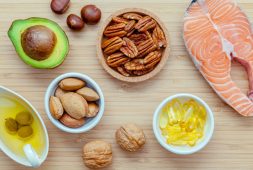
A recent review published in the journal Frontiers in Microbiology delves into the fascinating development of the oral microbiome in infants, placing a keen focus on various influencing factors such as early nutrition and environmental conditions.
The research on the oral microbiome is of paramount importance because it has profound implications for a child’s overall well-being throughout their life. The research group researched various studies that were published before August 2023 by using such keywords as “infant/toddler/early life/temporal development” with “oral/saliva/buccal/salivary/plaque/ mouth” and “microbiome/microbiota/bacteria” in Web of Science, PubMed, Google Scholar, Scopus, One Search (English), and ProQuest.
They discovered that Insights from this study hold the potential to reshape health guidelines for infants and facilitate the development of more effective strategies to promote lifelong health.
What Is Oral Microbiome?
The oral microbiome, a dynamic community of microorganisms found in various regions of the mouth, including the tongue, teeth, gingiva, palates, and tonsils, plays a pivotal role in maintaining our health.
An unhealthy oral microbiome is associated with a range of oral diseases, such as tooth decay, as well as serious systemic ailments like inflammatory bowel disease and rheumatoid arthritis. This review endeavors to shed light on how the oral microbiome evolves during early life and the critical factors that shape its development.
The colonization of the oral captivity by microorganisms commences even before birth, with bacteria such as Staphylococcus epidermidis making an early appearance. However, the oral microbiome is in a constant state of flux, undergoing significant transformations during the initial stages of life.
Remarkably, by the time an infant reaches one month of age, S. epidermidis, a prominent early colonizer, has nearly vanished, making way for the emergence of various other genera like Gemella and Haemophilus.
The composition of the oral microbiome in infancy is notably unstable. This volatility coincides with the development of an infant’s teeth and their introduction to diverse foods. As the infant grows, the microbial community within their mouth becomes more intricate and diverse. Over time, it begins to resemble that of their mother or primary caregiver. This dynamic continues until the child reaches approximately four years of age when the oral microbiome begins to stabilize, eventually maturing into an adult-like configuration.
The Importance of the Infant Diet
The precise mechanisms through which breast milk influences the oral microbiome are still under investigation. Bacteria present in human milk may be transferred from the mother to the baby during breastfeeding, resulting in striking similarities between the infant’s oral microbiome and the composition of their mother’s milk.
Human milk is also replete with components like human milk oligosaccharides (HMOs), short-chain fatty acids (SCFAs), and antimicrobial proteins. HMOs, acting as prebiotics, facilitate the growth of beneficial bacteria like Bifidobacterium and may offer protection against tooth decay by countering the impact of S. epidermidis. SCFAs are produced when colonic bacteria break down dietary fibers and, if transferred from mother to child during breastfeeding, could influence the oral microbiome by providing a surface for bacteria to colonize. However, they might also interfere with the body’s ability to combat bacterial pathogens.
The review highlights the crucial role of infant diet in shaping the oral microbiome. Breast milk, for instance, exerts a profound influence on its development. Babies who are breastfed exhibit distinctive microbiomes compared to those who are formula-fed. These differences emerge within days of birth. Breastfed infants tend to have higher levels of Streptococcus, Neisseria, and Actinobacillus, while formula-fed babies display higher proportions of Haemophilus, Veillonella, and Weeksellaceae. Notably, the microbiomes of formula-fed infants are more species-rich.
Furthermore, antimicrobial proteins such as lactoferrin, lysozyme, and secretory immunoglobulin A (slgA) found in breast milk play a vital role in shielding infants from various diseases. Their impact extends to the oral microbiome, where they provide protection against bacterial, viral, and fungal infections. Notably, the concentration of these antimicrobial proteins tends to decrease as infants transition from early breast milk to mature breast milk.
The duration of breastfeeding can also influence the oral microbiome, with infants breastfed for longer periods showing reduced levels of Porphyromonas, a bacterium associated with gingivitis and tooth loss. As infants are introduced to soild foods, their oral microbiome undergo significant changes, becoming more diverse, marked by reduced Streptococcus mitis and increased levels of Germella, Veillonella, and Fusobacterium.
Infant Dental and Respiratory Health
Beyond their diet, several other factors come into play in shaping the infant’s oral microbiome. The emergence of teeth, typically around six months of age, offers a new habitat for bacteria, with numerous species colonizing the mouth during this phase. As children lose their primary teeth and begin to grow permanent ones, the oral microbiome continues to mature. There exists a complex interplay between tooth decay and the oral microbiome, with each reciprocally affecting the other.
Additionally, bacteria such as Haemophilus and Pseudomonas have the potential to migrate from an infant’s respiratory tract to the oral cavity during activities like breathing and coughing. This transfer may pose health risks to the child, potentially leading to conditions such as influenza and pneumonia. Antibiotics, like amoxicillin, can disrupt the oral microbiome. Although some recovery occurs within three weeks, the long-term impact of antibiotic use on the oral microbiome remains a subject of concern.
In conclusion, the review offers valuable insights into the intricate development of the infant’s oral microbiome and highlights several crucial areas for future research. It underscores the need for comprehensive longitudinal studies that gather detailed data on nutrition, teething, and overall health throughout childhood. Additionally, advanced sequencing techniques should be employed to differentiate between various Streptococcus species, as they may have distinct effects on human health.
Furthermore, the review emphasizes the significant research gap about the influence of antimicrobial proteins in human milk on the oral microbiome. Ultimately, a deeper understanding of the oral microbiome’s formation is a pivotal step towards devising strategies that support the health of infants and ensure their oral and systemic well-being throughout their lives.



